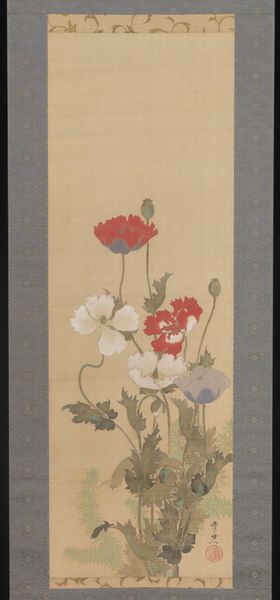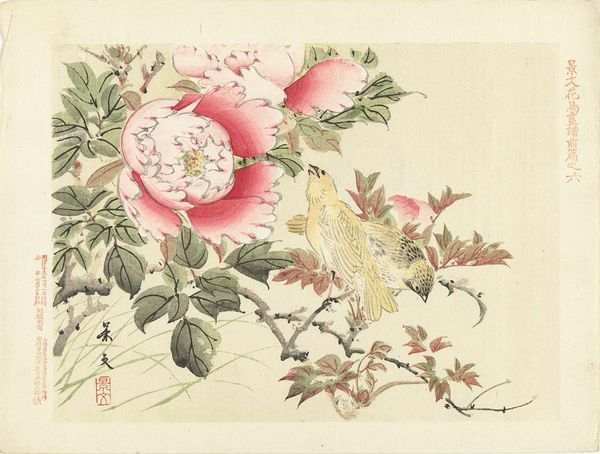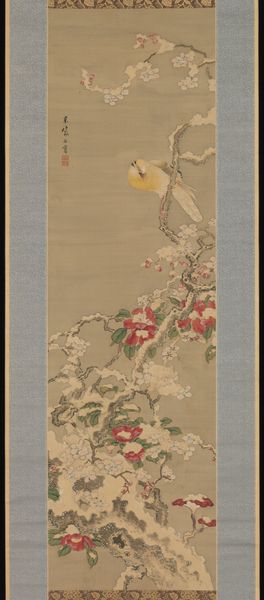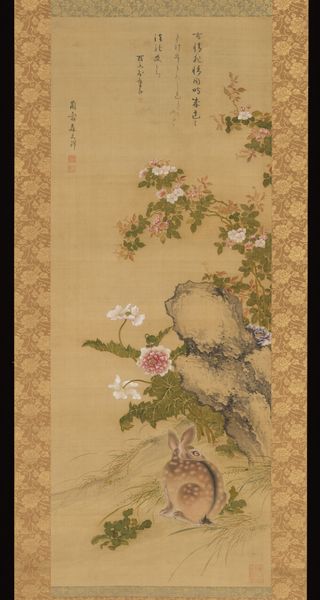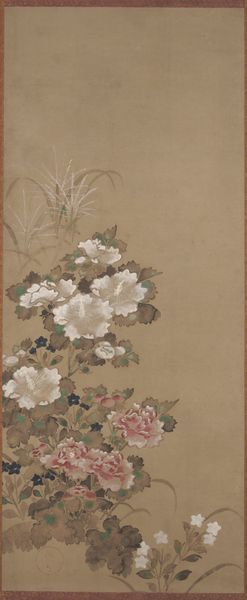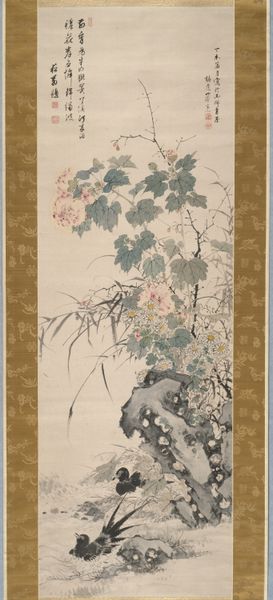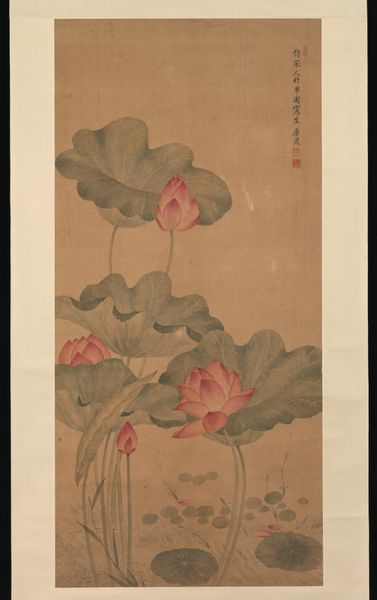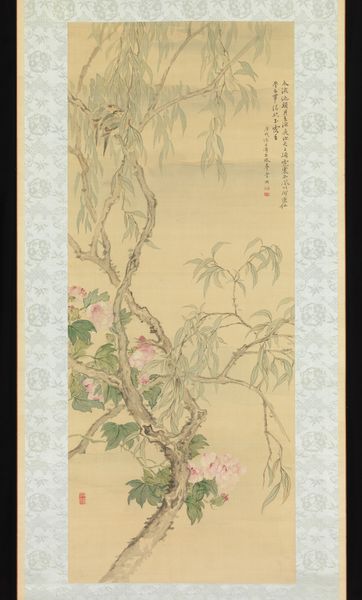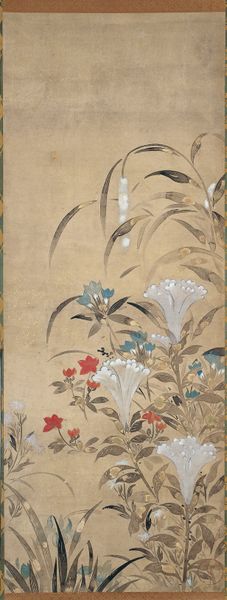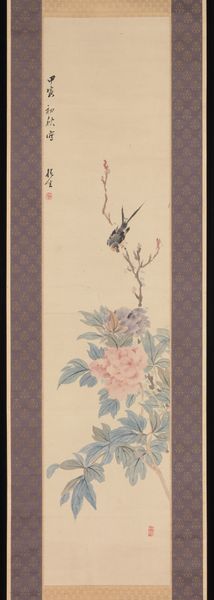![Flowers [left of a triptych of Kegon Falls and Flowers] by Ishikawa Kosai](/_next/image?url=https%3A%2F%2Fd2w8kbdekdi1gv.cloudfront.net%2FeyJidWNrZXQiOiAiYXJ0ZXJhLWltYWdlcy1idWNrZXQiLCAia2V5IjogImFydHdvcmtzLzYwZjBiMGZjLTZlY2EtNGE4OS1hMWE1LWQzOThhNzI3OGVmOC82MGYwYjBmYy02ZWNhLTRhODktYTFhNS1kMzk4YTcyNzhlZjhfZnVsbC5qcGciLCAiZWRpdHMiOiB7InJlc2l6ZSI6IHsid2lkdGgiOiAxOTIwLCAiaGVpZ2h0IjogMTkyMCwgImZpdCI6ICJpbnNpZGUifX19&w=3840&q=75)
Flowers [left of a triptych of Kegon Falls and Flowers] c. 20th century
0:00
0:00
painting, paper, watercolor
#
painting
#
asian-art
#
landscape
#
paper
#
watercolor
#
folk-art
#
orientalism
#
calligraphy
Dimensions: 44 × 11 3/8 in. (111.76 × 28.89 cm) (image)68 1/2 × 16 1/2 in. (173.99 × 41.91 cm) (mount, without roller)
Copyright: Public Domain
Curator: Here we have "Flowers," a work believed to be from the 20th century, attributed to Ishikawa Kosai. This lovely piece, part of a triptych including Kegon Falls, employs watercolor on paper. Editor: My first impression is how delicate it appears. The muted palette, combined with the paper's texture, gives it a slightly faded, almost dreamlike quality. Curator: Yes, and it's worth noting its construction as part of a triptych. The positioning of 'Flowers' to the left would have influenced how viewers initially approached the ensemble. How might this affect its reading? Editor: Well, traditionally flowers carry so much symbolism, but in a set like this the placement feels significant. With its vibrant colors and lifelike detail, I almost feel a sense of budding newness as one starts at the edge, leading us toward the larger central work of the falls. What blooms lead into the falls? Curator: That’s astute, because flowers have such powerful connotations throughout much of human history, acting as visual metaphors in religious and secular art alike. But in the Japanese context, what specific blooms capture the viewers' interest would depend so heavily on their background and socio-political viewpoint, considering this came about during Japan's period of cultural Westernization. It is as much about 'orientalism' and culture as it is about flowers. Editor: Indeed, a good point! It strikes me now that those splashes of red—the poppies, perhaps—are drawing me in because they have a stronger, lasting and maybe even louder impact next to the softer colors around it. It also seems to draw me up the work like it has been designed for exactly this intention. Curator: These color choices reflect larger patterns, for sure. By considering those artistic decisions, alongside contemporary records of display and commentary, we get a much clearer picture of art's social function. Kosai was working in a period where tradition met rapid modernization in Japanese art and culture. Editor: So, this work encapsulates more than just botanical beauty; it represents a pivotal point of intersection and evolution. Thank you! Curator: Precisely! It gives one pause to imagine how it was interpreted in its own day. Thank you for joining me on this floral investigation!
Comments
No comments
Be the first to comment and join the conversation on the ultimate creative platform.



